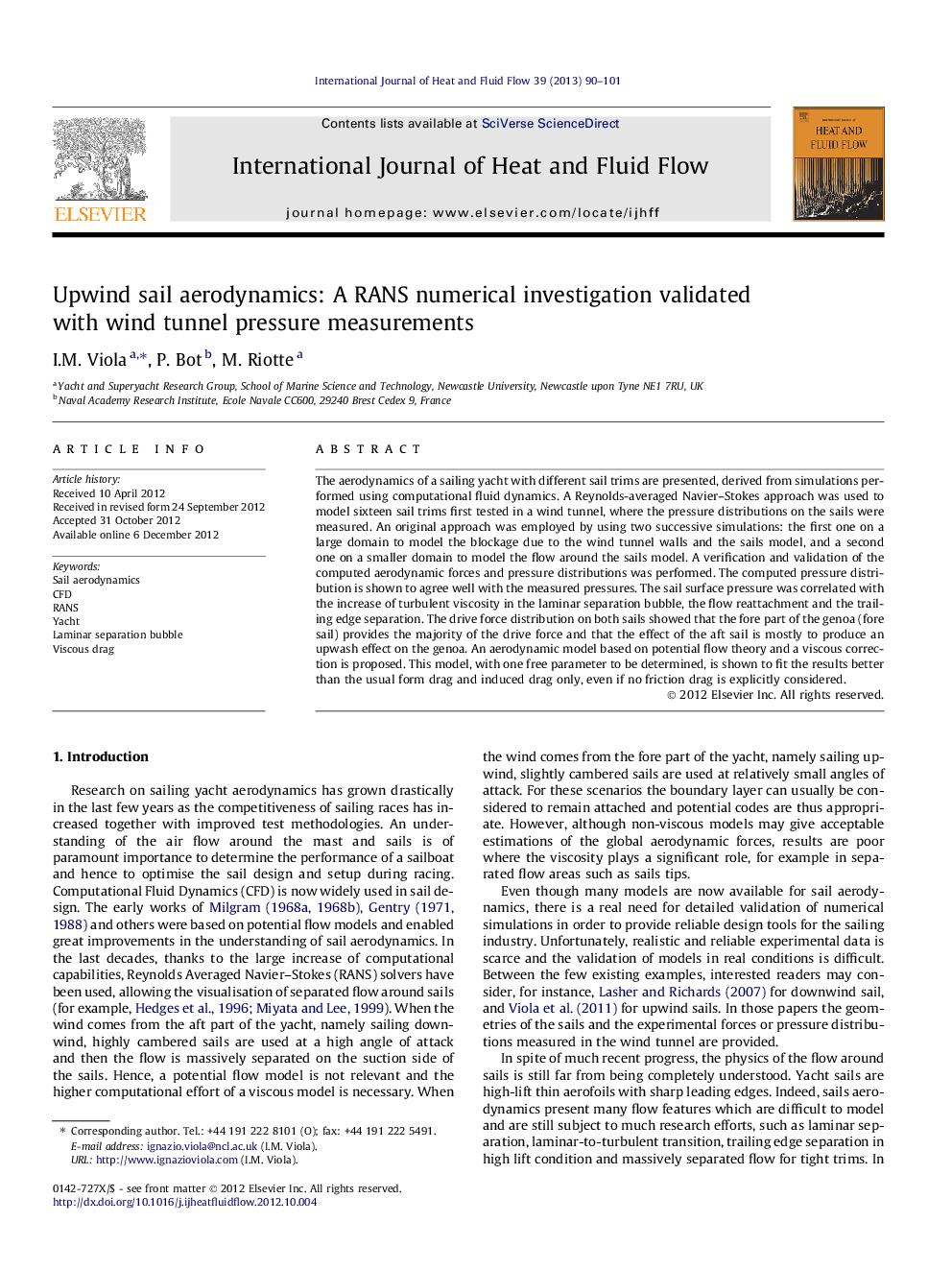| کد مقاله | کد نشریه | سال انتشار | مقاله انگلیسی | نسخه تمام متن |
|---|---|---|---|---|
| 655481 | 1457642 | 2013 | 12 صفحه PDF | دانلود رایگان |

The aerodynamics of a sailing yacht with different sail trims are presented, derived from simulations performed using computational fluid dynamics. A Reynolds-averaged Navier–Stokes approach was used to model sixteen sail trims first tested in a wind tunnel, where the pressure distributions on the sails were measured. An original approach was employed by using two successive simulations: the first one on a large domain to model the blockage due to the wind tunnel walls and the sails model, and a second one on a smaller domain to model the flow around the sails model. A verification and validation of the computed aerodynamic forces and pressure distributions was performed. The computed pressure distribution is shown to agree well with the measured pressures. The sail surface pressure was correlated with the increase of turbulent viscosity in the laminar separation bubble, the flow reattachment and the trailing edge separation. The drive force distribution on both sails showed that the fore part of the genoa (fore sail) provides the majority of the drive force and that the effect of the aft sail is mostly to produce an upwash effect on the genoa. An aerodynamic model based on potential flow theory and a viscous correction is proposed. This model, with one free parameter to be determined, is shown to fit the results better than the usual form drag and induced drag only, even if no friction drag is explicitly considered.
► A novel method similar to marching technique was used to model wind tunnel tests.
► Sail trim criteria based on their interactive effect are identified.
► Areas of separated flow were characterised.
► Local flow field was correlated with sail surface pressures.
► An aerodynamic model based on potential flow with viscous correction is proposed.
Journal: International Journal of Heat and Fluid Flow - Volume 39, February 2013, Pages 90–101